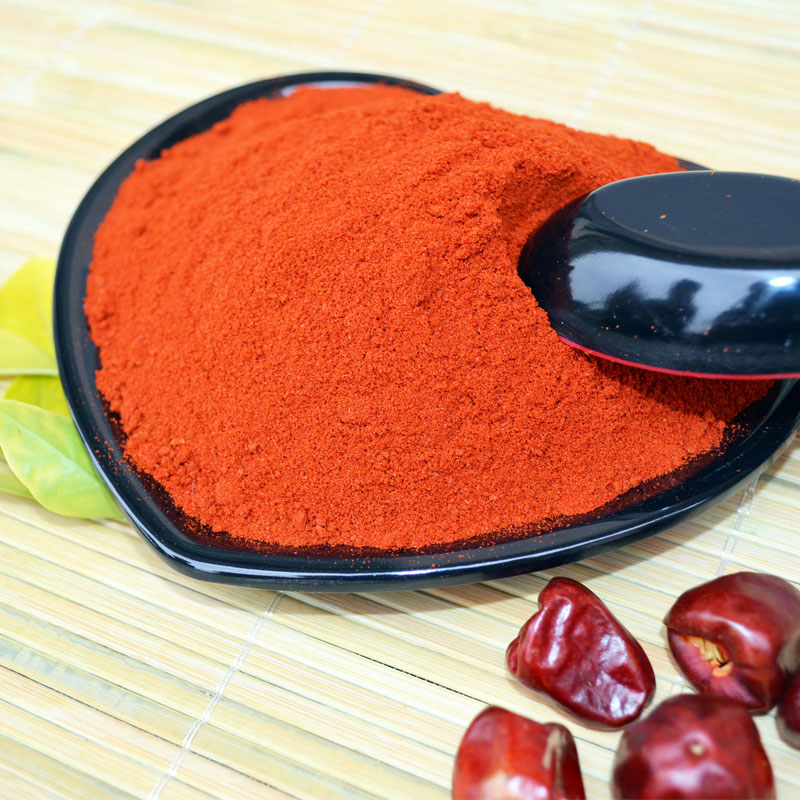- No. 268 Xianghe Street, Economic Development Zone of Xingtai city, Hebei 054001 China
- Byron@hbhongri.cn
Paprika vs. Chili Powder vs. Cayenne: What’s The Difference? paprika products
Chili peppers are used to make countless spice blends and seasonings, all around the world. From the fiery cayenne powder to kick up the heat to the sweet paprika for homemade stew.
But what is the difference when it comes to ingredients and flavor? Today, I’ll give an overview of the differences between paprika vs. chili powder vs. cayenne. I’ll share what exactly is in each of these spices, how they differ in flavor and heat, and how each is typically used. Let’s get into it!
Paprika Powder
Quick summary: Paprika is a spice made of dried and finely ground chili peppers and can be sweet or spicy. Chili powder is a blend of spices that include chili peppers, cumin, garlic, and other herbs and spices. Cayenne powder is made up of ground red cayenne peppers, and is primarily used to add heat to dishes.
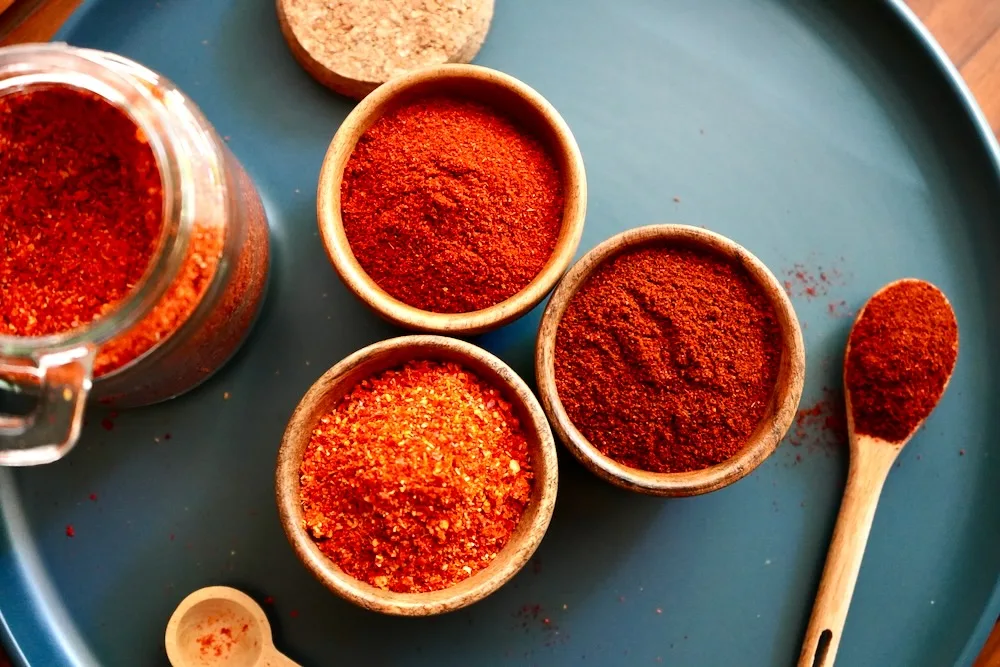
What Is Paprika?
The word paprika is Hungarian for pepper. At its core, paprika is a powder made up of dried and finely ground red peppers. This globally popular spice can be sweet, spicy, or smoked. Not only does paprika add rich flavor, but also a beautiful red color to dishes.
Most of the best quality paprika comes from either Hungary or Spain. These countries have very different ways of making the spice. In Hungary, the peppers are commonly cured and sun dried. In Spain, the peppers are often cured over smoldering oak logs in large barns for a deep and smoky flavor.
Types of paprika:
- Sweet paprika. Classic sweet paprika is the most popular form of this spice. This non-spicy powder is often described as sweet, earthy, and warm in flavor. Sweet paprika is what is most often used to make the classic Hungarian dishes chicken paprikash and goulash. Get some high-quality Hungarian sweet paprika here.
- Hot paprika. If you like the flavor and color of sweet paprika, but also enjoy some heat, you should try Hungarian hot paprika. To make this spice, the seeds and placenta are left in the peppers. This is where the capsaicin is located in hot peppers, so the paprika is spicy as a result. Get some Hungarian hot paprika here.
- Smoked paprika. As the name would imply, smoked paprika is made by wood smoking the chili peppers before drying and grinding. The aroma is much bolder and is popular when making chili powders and other flavorful spice blends. Get some delicious Spanish smoked paprika here.

Hungary has an incredibly complex grading system for their various paprikas. It measures flavor, color, and heat level, and each paprika falls into one of 8 distinct categories. Needless to say, Hungarians take their paprika very seriously!
How is paprika used? The most popular form of paprika is sweet paprika, meaning it has no heat. This spice is a rich red color, and is used to add sweet and earthy flavor to meals. Common dishes that use paprika range from authentic Hungarian goulash, to chicken paprikash, rice dishes, chili con carne, eggs, soups, and stews.
Paprika is a simple spice with hidden complexity, making it special and versatile in the kitchen. Now, how does paprika compare to chili powder and cayenne?
What Is Chili Powder (Er, Chile Powder..?)
Chili powder is a confusing spice. This is because the spelling often dictates what you’ll find on the ingredient list.
- Chili powder. Chili powder is a blend of spices that is used in chili con carne, meat rubs, and on tacos. This spice is primarily made up of ground chili peppers, but also contains heavy amounts of garlic powder, cumin, oregano, and other herbs and spices. Get some delicious chili powder here.
- Chile powder. Chile powder is simpler, and is made up of dried and ground chili peppers. In this way, chile powder is very similar to paprika, but is often made using different varieties of peppers. The type of pepper is sometimes included in the name, for example ancho chile powder uses just dried poblano chile peppers.
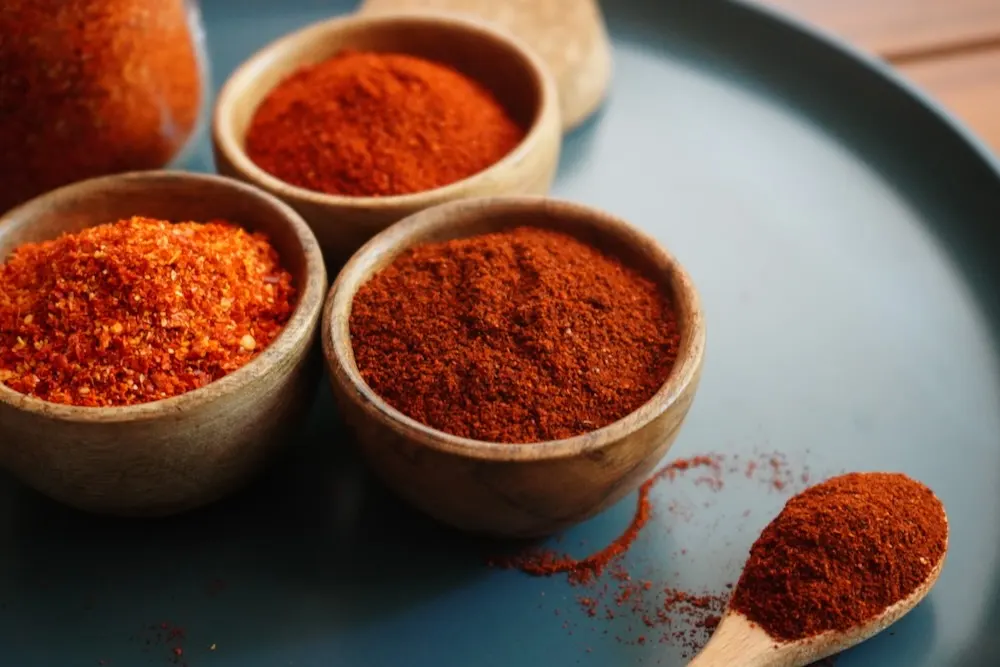
So, let’s focus on chili powder, or the spice blend that is used to make chili con carne, tacos, and delicious meat rubs. This is genuinely one of my favorite spices, as it alone can often be enough to flavor an entire dish.
There are countless variations of chili powder recipes, with some being much more complex than others. However, with just a few readily available ingredients, you can make your own amazing homemade chili powder.
Common chili powder ingredients:
- Ground chile peppers (ancho, guajillo, pasilla, New Mexico, etc.)
- Garlic powder
- Cumin
- Oregano
- Smoked paprika
- Sweet paprika
- Black pepper
While these ingredients are the most commonly found in chili powders, you can get as experimental and adventurous as you’d like. For example, Chile 9000 (one of our favorite chili powders) contains lemon peel, cocoa powder, and ginger!
What Is Cayenne Powder?
Lastly, let’s talk about cayenne powder. Cayenne is probably the simplest spice in this article, as it contains just one ingredient: Cayenne pepper.
To be fair, “cayenne” actually describes a group of hot pepper varieties in the C. annuum species. Cayenne peppers range from long and curly, to short and straight, and many in between.
However, all cayennes have one thing in common: They’re spicy.
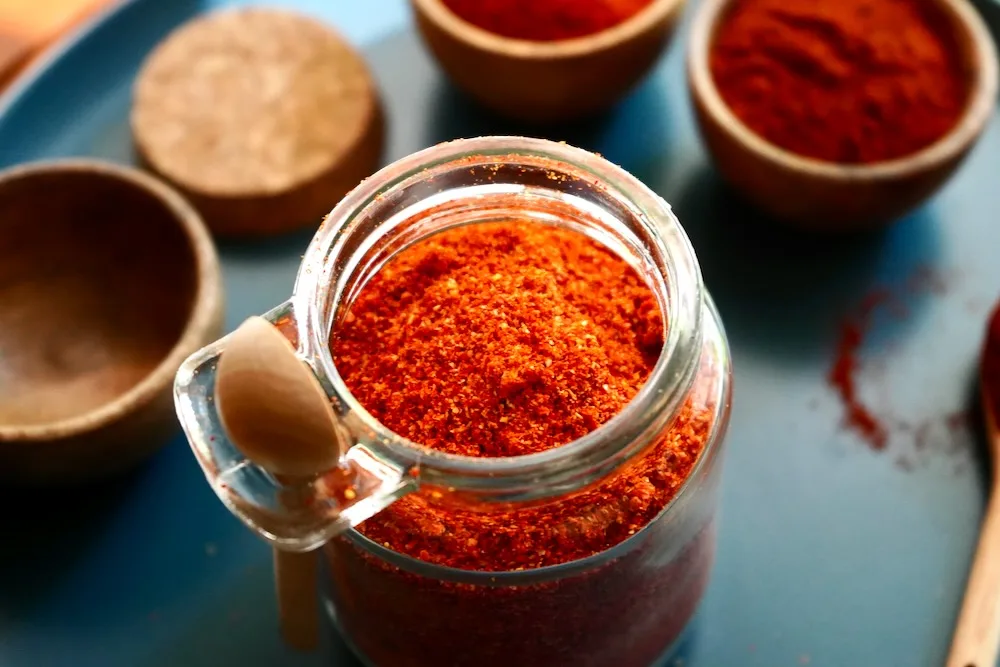
So, as you likely know, cayenne powder is particularly hot and spicy. As a result, it is primarily used to add heat, not flavor, to food. A little goes a long way with cayenne powder, so most recipes will call for relatively small quantities (usually 1/8-1/4 teaspoon for a whole meal).
Get some high-grade cayenne powder here.
Making homemade cayenne powder is easy, but should always be done in a well-ventilated space, or ideally outdoors! We make tons of our own homemade cayenne powder every year, as it is a simple way to add heat to our cooking. For a more flavorful result, use your cayenne powder to make a tasty spice blend like shichimi togarashi.
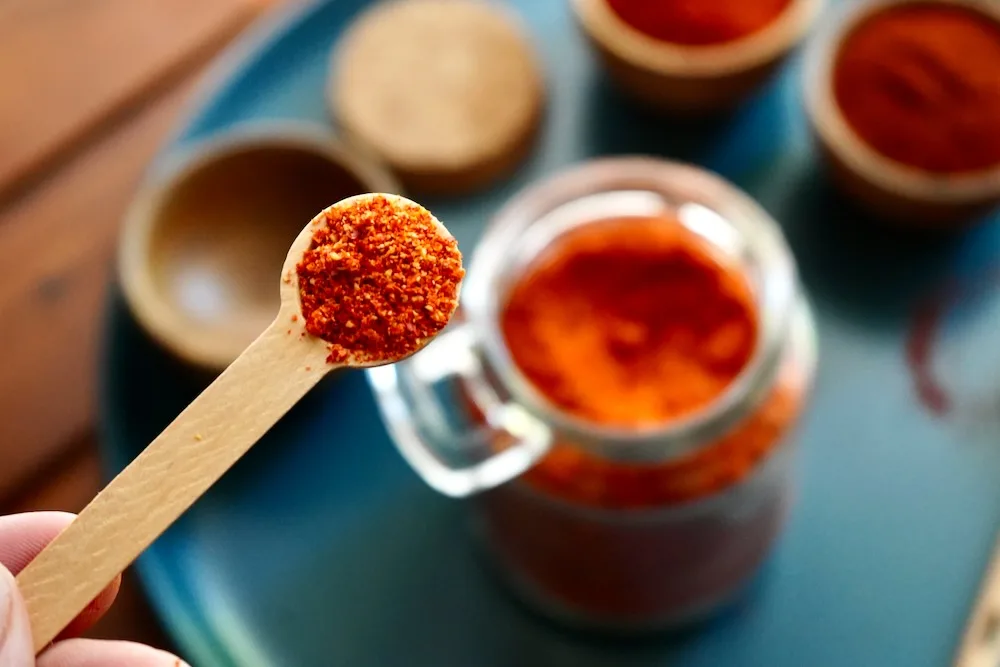
Other Ingredients Similar To Paprika
- Red pepper flakes. Red pepper flakes are most often made with spicy red chili peppers. They’re dehydrated and ground into a coarse flake that is common in Italian cooking (and in pizza shops).
- Chipotle pepper. Chipotle peppers are made by smoking and drying red jalapeño peppers. These are potent with flavor, and can be used to make incredibly flavorful foods. Try grinding them to add to your own homemade taco seasoning – yum!
- Pasilla/Ancho. Many chile peppers are grown for drying, and can be bought as whole dried chiles. Pasilla is a common Mexican pepper that is used in countless spices, sauces, and dishes. Buying the peppers whole and grinding them just before cooking is a great way to get the most flavor.
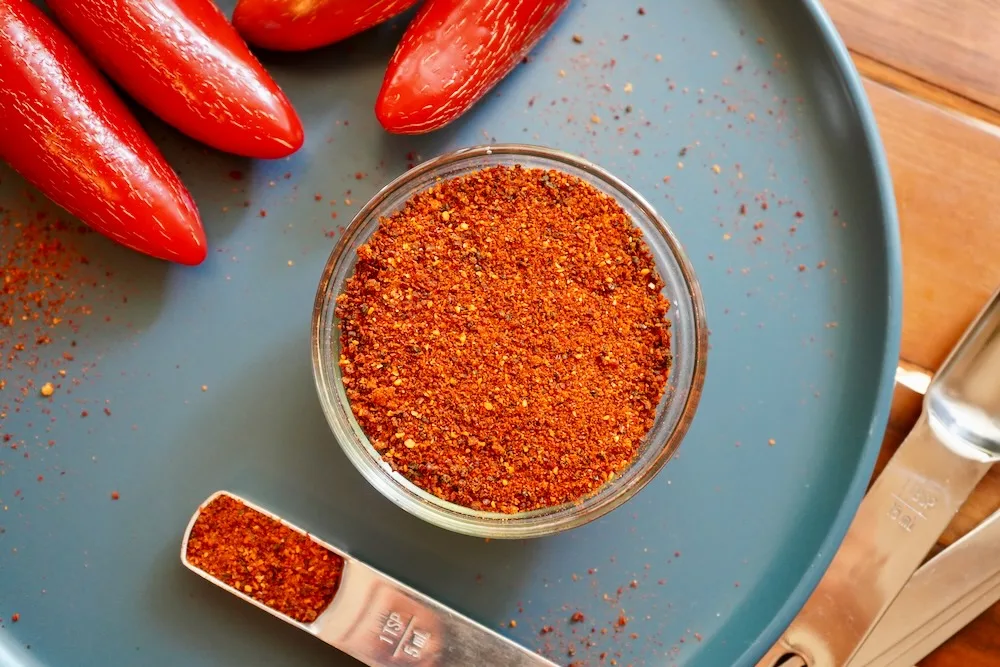
I hope this article has helped you learn the differences between paprika, chili powder, and cayenne. These spices are all delicious and useful in the kitchen, and we never let ourselves run out of stock. Happy cooking!
-
Capsicum frutescens oleoresin – High Purity, Food GradeNewsNov.17,2025
-
Capsicum Frutescens Oleoresin – Natural Heat & FlavorNewsNov.17,2025
-
Peppereka Powder – Fresh, Vibrant Color & Sweet AromaNewsNov.17,2025
-
Paprika Oleoresin | Natural Red Color, Heat & Flavor BoostNewsNov.17,2025
-
Pure Turmeric Extract 95% Curcumin | Potent, Lab-TestedNewsNov.17,2025
-
Red Papper Pods – Premium Sun-Dried, Bold Heat & AromaNewsNov.10,2025
